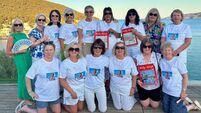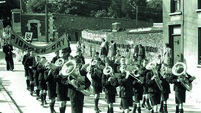Remembering the Cork man whose 'heroic efforts' saved many lives at sea
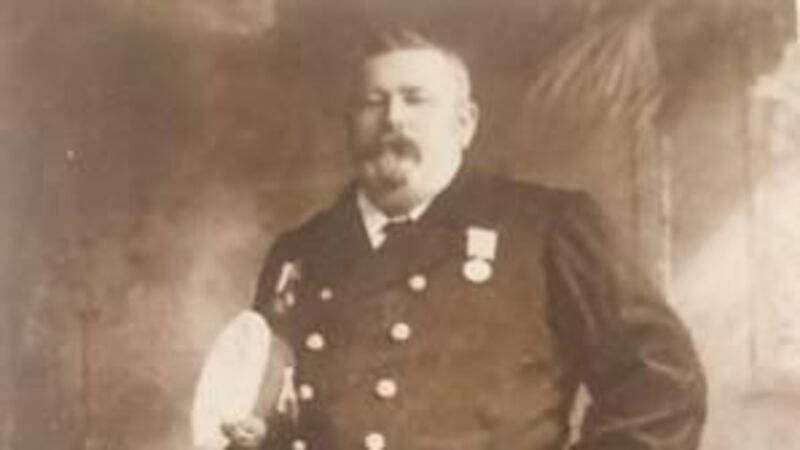
Patrick Buckley, born in Cork in 1858, joined the British Royal Navy in 1873 and went on to join the British Coastguard service where he participated in countless sea rescues.
Brave and fearless, his courage and self-sacrifice were evident in his participation in countless sea rescues, some of which earned him recognition from the highest offices.
Born in Cork on April 12, 1858, Patrick joined the British Royal Navy in 1873 and had a long service record, travelling the world on numerous ships and going on to join the British Coastguard service.
At the time, the Coastguard was part of the navy service, protecting seafarers on the British and Irish coastlines.
It all started when at the age of 15, my great-grandfather sailed from Queenstown (Cobh) on a Norwegian barque called the Asta of Drammen to New York.
This was to be the beginning of a maritime adventure that saw him sail to ports in France, Germany, Norway, Scotland.
Following training on H.M.S. Ganges at Falmouth he was commissioned to H.M.S. Sapphire in August 1875 and left Plymouth for Sydney, Australia, calling to Maderia, Vigo, Ascension Island, Simons Bay, Capetown, Perth, Freemantle, Adelaide, and Melbourne arriving in Sydney after six months.
The ship left for Brisbane and at Port Chalmers, New Zealand, he was drafted to the sailing schooner Beagle, to proceed to the South Sea Islands, calling at Makira in the Solomon Islands.
Here he lived ashore under canvas for three weeks, then left for New Hebrides (Vanuatu).
At Tanna, or as it is called Port Résoultion, they encountered war, and having captured 17 ships, Patrick Buckley and the crew returned to England.
His next voyage took him to China on the troopship Tyne in 1880, and then on H.M.S. Curacoa to Hong Kong.
On this expedition he visited several parts of the world, taking a round trip through the Suez Canal, Port Said, Malta, Gibraltar, and returning finally to Plymouth.
It was on August 13, 1886 that Patrick Buckley joined the Coastguard Station at Sandgate in Kent.
Just weeks later the barque Ellida was wrecked at Folkstone.
The ship broke in half and Patrick swam aboard the after-part and saved the log books.
Later, when stationed in Romney near Dungeness, in Kent, Patrick demonstrated his bravery and courage by attending to many wrecks and collisions during several heavy storms in the Littlestone Lifeboat.
In 1889 he was sent to Hythe and Dymchurch and then back to Hythe (Kent), as he was the only man who knew the international code of signals at that time.
Patrick was to show his bravery again, when on November 11, 1891, a ship named the Benvenue was sunk abreast of Seabrook lifeboat house during a hurricane.
Five seamen, seeing no hope of rescue, jumped into the water and were almost instantly drowned.
The lifeboat was put out to sea immediately from Seabrook, with Patrick Buckley amongst the crew.
However, the seas were so rough that the boat capsized at an early stage.
The oars were said to have been smashed owing to their having come in contact with a heavy steel spar, and some of the men had their legs broken.
While the boat was eventually righted, she was quickly washed ashore by the sea.
On the next attempt, the lifeboat was taken two miles westward to Hythe.
It was reported that the boat was capsized eight times in succession.
The lifeboat, Mayer de Rothschild, was flung back on shore by the sea and the gale.
At noon they tried again from Hythe but the boat overturned in the breakers.
Eventually, their efforts succeeded and 27 survivors were rescued.
The lifeboat was so overloaded that it was said that several of the lifeboatmen hung on to lifelines overboard on the homeward leg.
Queen Victoria was so impressed by this rescue that she granted permission for her profile to be featured on a special medal struck to mark the rescue and these medals, with a monetary award, were presented to Patrick Buckley and the members of the crew on January 1, 1892, by The Mayor of Folkstone, Mr Stephen Penfold.
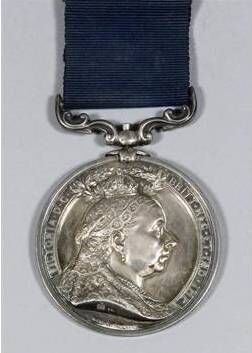
In 1893, Patrick was sent to Ireland and took up his position at Wexford.
From there he went to Roches Point.
On the night of October 7, 1896, Patrick was the signalman on duty when the Puffin, a light vessel situated at Daunt’s Rock, five miles from Roches Point, went down during a hurricane.
The entire crew of eight was lost.
That night, it was said, all the buoys broke adrift in Queenstown Harbour.
In August 1897, the wreck of the Puffin was towed into Cobh harbour.
Patrick Buckley was appointed to Crosshaven in 1898, and in 1901 as chief boatman, took charge of Ballycrovane Station Castletownbere.
On promotion to Station Officer in October 1905, he was appointed to Ballydavid, Co. Kerry.
After nine months he was appointed to the charge of Liscannor, Co. Clare.
In 1906 he was promoted to chief officer.
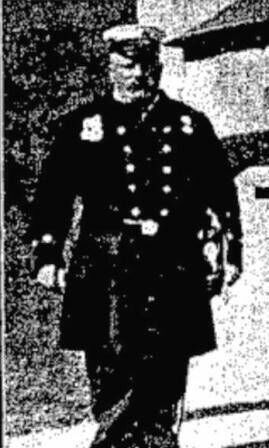
It was here on October 1, 1907, amid raging, tumultuous waves that he took part in the attempts to save the crew of the Leon XIII, a French sailing ship which was wrecked at Quilty, Co Clare.
In a report at the time, particulars of Patrick Buckley’s daring exploits where he played a heroic part were given.
The French vessel was driven into Quilty by a violent storm and was jammed in closely between two rocks.
The brave Quilty men in their canoes and a British cruiser with her lifeboats made their way to the Leon XIII.
It was reported that Mr Buckley, always ready to respond to calls of this character, had charge of the Coastguard Station at Seafield when the summons for aid came.
He immediately set off with his crew in the lifeboat from Liscannor, twenty miles away.
The lifeboat broke down but she was quickly righted, and the coastguard officer and his crew in the teeth of a fierce storm bore down on the Bay of Quilty.
It was reported that when they got within half a mile of the wreck they could hear the screams of the Frenchmen.
Eventually, they got under the bow of the Leon XIII and, though the sea was mountain high, they succeeded in rescuing a French seaman who was almost on the point of death.
For his action on that occasion, Mr Buckley was presented with a silver medal and a certificate in vellum by the French Government.
He was appointed to Crosshaven in 1908 and was chief officer there until his retirement in 1913.
He remained in Crosshaven until his death in 1936.
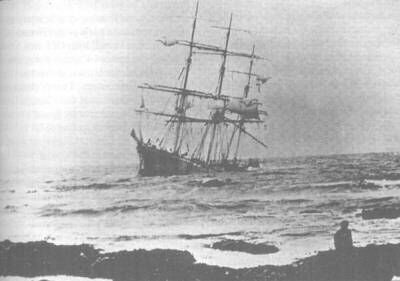
An article in the Cork Examiner on May 8, 1913, acknowledging his retirement as Chief Officer of the Coastguards at Crosshaven read:
This article appeared in the 2024 Holly Bough.
